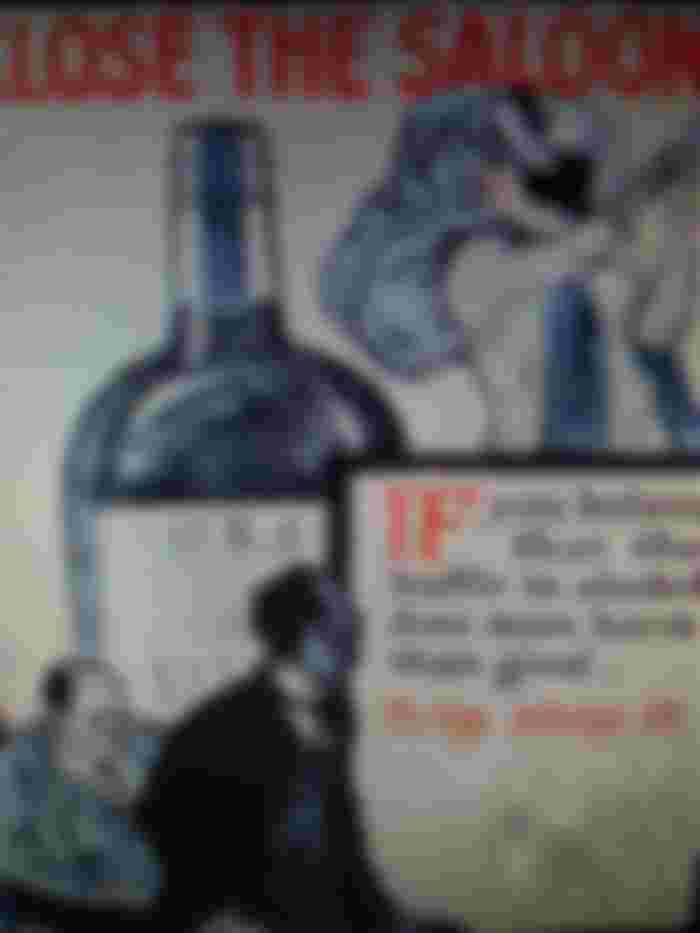On Saturday, January 17, 1920, a local newspaper, somewhat cynically, announced the beginning of one of the most incredible trials in modern history.
"A minute after midnight", the text began, "America will become as dry as desert when it comes to alcohol, and all beverages containing one percent alcohol will be banned."
In fact, the Walsted Act, (National Prohibition Act, named after Andrew Walsted, the presiding member of the House of Justice that pushed through the law) came into force earlier at midnight. But the authorities allowed the fans of good drop to spend another day or night at the bar, before the law came into force.
Across the United States, many bars and restaurants served alcohol for free, whie others seized the opportunity to make good money, charging a fabulous $20-$30 for a bottle of champagne or up to two dollars for glass of whiskey or cognac. In some taverns, the "mourners" threw the drunk bottles into a real coffin that stood in a place of honor in the middle of the room, while in other places, as a sign of protest and grief, they painted the walls of the restaurant black.

The ladies rush to the taverns
It all started in 1826, when the American Association of Anti-Salon Leagues was founded, which in ten years of existence, had over a million members, opponents of alcohol. The majority were middle-class Protestant woman. Dressing in black, they tirelessly went from door to door, from cafe to cafe, and, singing sad songs, protested against the pouring of alcohol. Mostly deeply pious, they saw Prohibition as a kind of social reform and a kind of crusade against alcohol alcohol fumes from which it was supposed to cleanse American cities and return them to the virtues of the "divine republic". It is also interesting that most of them nurtured advanced beliefs by fighting hard against slavery in the United States.

Prohibition has become the law. Unfortunately for its lawyers, the federal governments have never been able to fully implement it. Especially, if it is known that only 1,500 federal agents were in charge for prohibition's implementation, but there wasn't understanding from the general public or neighboring countries. Neither Mexico nor Canada intended to deal with distilleries near their borders with the United States.
The mayor is drunk
Many Americans were not inclined to respect the law on the prohibition. Not even those who remained dry-headed, and even more to those who saw its violation as a great opportunity for additional income. Cafes with secret pouring of alcohol began to sprout at every step. Chronicles of the time estimated that by 1925, at least 100, 000 illegal bars operated just in New York, while most of them were extremely well-equipped and served mostly those with deeper pockets.
In Detroit, near the Canadian border, smugglers used fake car floors, hidden parts and various wisdom and tricks to bring alcohol to the city. It was kind of public secret, as evidenced by the record of how the police raided an expensive restaurant in downtown Detroit and found a local sheriff, two congressman drunk by the bar.
At that time of prohibition, which lasted for many long fourteen years, today we mostly see it as (film) adventures of Al Capone and his gangsters, the time when they earned the "first" million. However, the story has a different and much deeper root, almost two century old.
The biggest winners of the ban were, of course, criminals. The law was in force for only one hour when police noticed the first case of its violation: six armed robbers stole a load of so called medical alcohol worth a hundred thousand dollars from a train in Chicago.
According to an unverified story, the first gangster to reveal a new earning opportunity was Arnold Rothstein, whose gang members are suspected of rigging the 1919 Baseball World Cup. After setting up an office at the Linda Restaurant in downtown Manhattan, Rothstein began bringing in various types of alcohol across the Great Lakes and supplying local scammers and alcohol lovers.
He was assassinated in 1928, but then his fame was so great that the famous writer Scott Fitzgerald took him as an inspiration for the character of Meyer Walsheim in the novel "The Great Gatsby" - a small, cunning and cruel Jew with a necklace of human teeth.
Let's have a beer
By far the most famous gangster of those years, was of course, Al Capone. Living in the luxurious Lexington Hotel, he held most of the Chicago underground, and it was rumored that he earned close to 100 million dollars a year just by betting. It is hard to imagine how much he took while smuggling banned alcohol. To many people, however, this cold-blooded killer seemed like Robin Hood, opening kitchens to the poor and giving considerable sums of money to charity.
But when, in 1929, on Valentine's Day, he ordered the brutal murder of six of his rival, the public's affection faded. And then the federal agent, Eliot Ness, in charge of enforcing the Prohibition law, with his team known as the "Unbreakable", managed to put him behind bars, thanks to an administrative omission (tax evasion), where he died.
Somehow at the same time, the already lukewarm public support for the implementation of the law on prohibition began to wane. The newspaper claimed that eight out of ten congressmen drank in lavishly equipped illegal bars, and it became clear to everyone that the attempt to ban alcohol completely failed. In March, 1933, just weeks after presidential oath, Franklin Roosevelt signed an amendment to Walsted's Act allowing the sale of 3.2 percent alcohol beer. The Great Depression was already in full swing, national morale was at an all-time low, and the Americans "welcomed one beer".
And so, on December 5, 1933, the 21st Amendment was adopted, which marked the end of the prohibition, which, in many ways, brought more harm than good. For example, countless people went blind or died from whiskey produced in secret hand distilleries, and the percentage of heavy alcoholic doubled. Edgard Hoover, the omnipotent head of the newly created Federal Bureau of Investigation (FBI), wrote that it will take at least thirty years for the state to get rid of organized crime, which was created by the prohibition.
Literature and images: Politica's Entertainer, number 3563


This law banning the pouring of alcohol was wrong, because it allowed the saint of alcohol and the creation of criminal groups, and on the other hand, many people died from bad alcohol, which was made in various cellars.